
Is This Possibly The Healthiest Snack On Planet Earth?


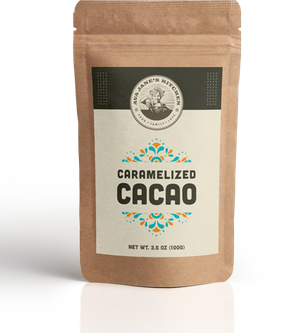
Get A Free Bag And Find Out For Yourself!

I want to believe. I seriously do.
I want to believe dark chocolate is this “miracle superfood” that’s good for me.
I want to eat healthy.
Eat organic, GMO-free and natural… Feed my family the same…
And enjoy a guilt-free treat once in a while. (Like dark chocolate.)
But c’mon. Dark chocolate? It’s candy, right?
How can “candy” possibly be healthy for you?
It just sounds too good to be true.
But all these articles I read online are backed by scientific studies, aren’t they?
You’ve probably heard how dark chocolate is good for you, as well.
How it’s the “most nutritionally complex food in the world”….
How it’s jam-packed with all these fancy health-jargon words like flavanols, catechins and polyphenols…
How it’s got over 37 (or even 57+) health benefits…
They make it sound like…
- Some Article on the Internet

Except... of course it can’t and it doesn’t...
Otherwise, every doctor on planet Earth would be prescribing chocolate for “what ails you”...
Listen — there’s no conspiracy theory here. Big Food isn’t crushing little chocolate.
But I’m not saying dark chocolate is good for you either.
Truth is, I’m a skeptic... I had to do my own research.
And I did.
And that’s when I went on a strange culinary adventure...
...Reading up on the wild history of cocoa from ancient Mesopotamia to modern day plantations in Venezuela...
...Stayed up late pouring over dozens of scientific clinical trials... ... (dozens of them paid for by the chocolate industry themselves!!!)...
And accidentally discovered royal cacao (“real chocolate” in Spanish) at a food fair in Mexico City...
...a genetic strain in the chocolate family that nearly went extinct...
And let me tell you...
You know how they say there are two sides to every story... and the truth is somewhere in the middle?

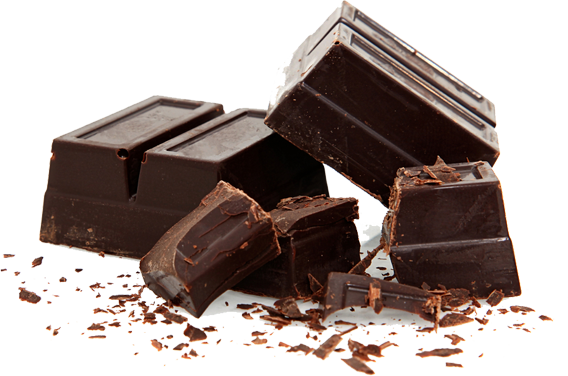
That’s what I realized once I dug into the dark underbelly of this whole chocolate business.
But the most amazing thing I discovered was “real chocolate”.
This was a chocolate, that by one measure is...
4.73 times more potent and healthful than dark chocolate itself.
I’m going to share everything I found out with you in a moment.
I’m also going to send you a sample of this “real chocolate” at the end of this article... absolutely free!
So, stick with me and get some free chocolate. (It doesn’t get better than that. I mean, who doesn’t want free chocolate?)
But let’s not get ahead of ourselves.
Allow me to introduce myself first...

Here’s the truth…
When you look at all the science these health articles footnote and quote…
How these clinical studies are double-blind, placebo-controlled, crossover-intervention, or whatever (that’s a mouthful!)…
It sounds really science-y and important and really good!
I mean, just take a look at what all these studies that back up chocolate say!

And you know what? When you read all this, you gotta ask yourself…
Is there anything chocolate can’t do?
I mean, I think we’ve checked off every. single. part of the human body on the list here! We’re talking about…
Heart health, gut flora, insulin resistance, brain cognition, fighting free radicals, lowering blood pressure, skin health, cholesterol levels…
Did I miss anything?

This is where it gets a little tricky.
When I started clicking on the links in these online health articles leading to the source material…
(The actual clinical studies written by the scientists…)
They all used words like…
“cocoa flavanols”… “flavanol-rich food such as cocoa”… “raw cacao”… “cocoa powder”… and “cacao beans”…
It was like they were doing everything within their power… to avoid saying the word “chocolate”.
I was confused at first.
Isn’t cocoa, cacao and chocolate more or less the same thing?
They all have flavonols in them right?
Were these scientists just trying to sound smart… by using a more scientific word?
Or was it something else?
And that’s when I dug into the research more and found out…
Cocoa and cacao are extremely different things from chocolate.
And frankly, most of these studies weren’t even using “dark chocolate”. (At all…)
So when you read these articles online, and they’re saying how dark chocolate is good for you because it has all these health
benefits…
Like lowering blood pressure, insulin resistance and cholesterol…
They’re not technically lying. Chocolate does have flavonols.
And flavonols are the active health ingredient here…
But that’s like squirting a single drop of orange juice into a glass of water and then saying there’s vitamin C in there.
Not lying… but also not exactly truthful either…
Long story short, the amount of the “good stuff” inside chocolate is nothing compared to what’s inside the rawer, less processed version of it: cacao.
But what the heck is cacao?




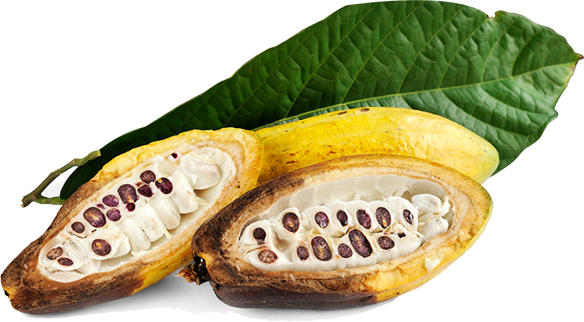
Here. Let me show you something neat.
This is a cacao pod.
This is where chocolate comes from.
As you can see, it’s a little lumpy with ridges and honestly? It looks kinda weird. Like most exotic fruits near the equator.
Now, if you open it up…
You will see twenty to thirty cacao seeds inside… along with this white, fleshy pulp.
Now — what you do is…
You take the seeds out. You dry them under the sun. You roast them a bit, chop them up into nibs and then you grind it into a paste.
This paste is what’s known as cocoa liquor. You can separate it even further into cocoa butter and cocoa solids.
But ultimately, cocoa liquor is what you use to make chocolate.
Here’s what most chocolate companies do with this this cocoa liquor…
First, they add milk, sugar, vanilla, extra cocoa butter and lecithin.
Next, they grind this mixture up even more.
They do this because otherwise, the chocolate might feel course (like my name, John Cawrse!) But if they grind it too much, it sticks to your palate. That’s not good either.
After that, they do this process called “conching”.
This is the step you need to pay attention to.
Think of conching like a humongous mixer in a large vat.
You basically keep blending and moving this mixture… for days. Sometimes up to a week!
Conching mixes, aerates and agitates the chocolate so that you can get this velvety smooth taste.
And that’s how you get the base ingredient for chocolate.
So…

Why do they do this?
Well, a lot of chocolatiers argue that all this refining and conching removes the harsh-tasting flavors…Like bitterness or the acetic acid.
Conching also further shrinks the particles for that smooth taste people want.
But hey, between you and me, we both know what “refining” and “conching” is, right?
It’s really “processing” at the end of the day.
And whenever you process food, you end up killing most, if not all the nutrients in it.
In fact, in a recent Vox article, they looked into the chocolate industry and discovered…
“While fresh cacao beans are rich in flavonols, the nutrients can get destroyed during chocolate processing, so most candy bars don’t deliver the potentially blood-boosting stuff.”
That’s why most salt, flour and fruit juice is bad for you.
It’s been mashed up, smashed up and stripped of all its natural goodness.
In the case of chocolate, it ’s been heated, mixed and blended until most of the original flavonols are… well, gone.
If you want to be scientific about it, as much as 97% of flavonols are destroyed in the process.

Well, that’s actually quite simple.
If you want to eat the kind of chocolate that’s filled with all the health benefits as backed up by the scientific studies…
You take a few steps backwards.
“Cocoa powder” is basically the cacao beans ground up… and you take the cocoa butter out.
In other words, it’s chocolate before you mix it, refine it and conch it.
By only grinding the cacao beans in a low temperature setting…
You end up keeping as much of the enzymes, vitamins and nutrients as possible.
What can you do with this cocoa powder?
Well, you can sprinkle it in your smoothie, hot drink or fruit.
It’s powerful stuff, so you probably don’t want more than a teaspoon at a time.
You can also bake with it to add flavor to your pastries (but of course, heat will destroy some of the nutrients).
Of course —
Here’s the real question…
What if you want the even more potent stuff to get the MAXIMUM benefits out of chocolate?
Can you eat whole cacao beans?
After all, it doesn’t get healthier than that right?
Remember when I said chocolate has enough anti-oxidants to beat out Acai berries, Goji berries and blueberries… combined?
Well, take a look at this.
In a study done by Brunswick Laboratories in Massachusetts… and published by the USDA in the Journal of Chemical Science…
Here are the ORAC scores per 100 grams of…
| 62,100 | |
| 30-50,000 | |
| 26,000 | |
| 25,300 | |
| 18,500 | |
| 13,120 | |
| 6,740 | |
| 2,400 |
Ava Jane's Kitchen Caramelized Cacao
Notice how “raw cacao beans” are at the top of the list with a score of 62,100?
What I find funny about this list is the fact that…
Milk chocolate has more anti-oxidants than a handful of blueberries!
But I guess that really speaks to the power of chocolate even after you process it!
But that’s neither here nor there.
Back to the original question:
Can you eat whole cacao beans?
The short answer?
Yes.
The long answer?
This is where I tell you…


Why was this table waaaaay back on the third floor?
Well, they weren’t selling chocolate.
Not exactly.
You see, the man behind the table was Carlos Sandoval. He was a real friendly guy.
In front of him was a glass bowl filled with what looked like little lumps of caramelized brittles.
I had no idea what it was.
“Try one,” Carlos said.
I don’t know why, but after seeing an ocean of chocolate and candies I didn’t care for… I went for this.
I popped one in my mouth.
It was crunchy, hearty and it filled your mouth with a strong, indescribable aroma.
At first, the slight bitterness reminded me of coffee.
But within moments, I realized, this… was… the strong scent of… chocolate.
“What is this?” I asked Carlos.
(Of course, I already knew the answer).
It was chocolate in its rawest, unprocessed form: cacao beans.
And it was delicious.
The natural, organic flavors of unrefined cacao tasted… real, substantial and evoked authenticity.
You couldn’t help but think about…
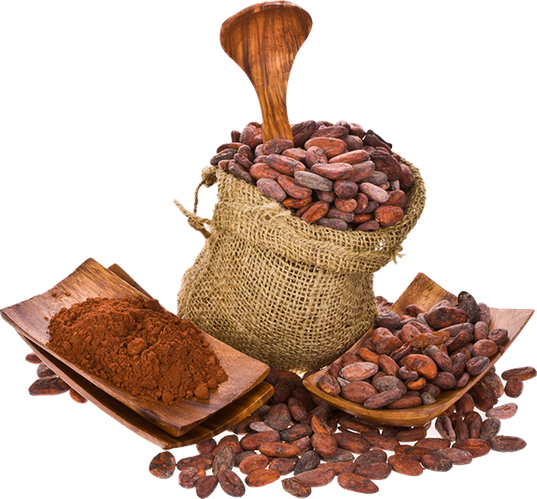

The jungle plantation, the farmers who harvested the pods and the sublime beauty of it all as you chewed on these cacao beans.
Like fine wine, imported cigars or a hand-crafted latte…
There was a complexity to the whole experience.
The moment it touched your tongue… to the aftertaste that came later.
Before long, I realized my hand had unconsciously reached for another one.
Carlos only smiled.
He started to tell me how these caramelized cacao beans were sold in high-end department stores in Mexico like “Liverpool”.
Think of Saks on Fifth, Barneys and Bloomingdales in New York…
Liverpool would be the equivalent of those luxury department stores in Mexico City.
He also told me how the cacao from the many plantations in Tabasco and Chiapas had won several prestigious awards from chocolatiers in Belgium.
It has won prizes at Le Salon du Chocolat in Paris.
I was hooked…

Carlos then told me about the story behind these cacao beans.
He told me I was chewing on a unique genetic strain of cacao…
This strain was the original cacao in Mesopotamian and Aztec culture.
They drank cacao for religious occasions. It was served to kings and royalty. They used it as currency.
When cacao reached Europe in the 1500s, a Swedish botanist classified cacao as theobroma…
Which in latin meant “food of the gods”.
But the Spanish appearing on the scene also meant the beginning of the end for “original cacao”.
And you’re about to see how this unique strain of cacao’s would get crushed out and destroyed…
You see, it was the Spanish who started adding sugar to cacao to make a primitive version of chocolate.
By the 1600s, chocolate was commercialized.
Cacao plantations popped up in Columbia, Venezuela, Brazil. The Europeans imported slaves to farm the cacao.
And by the end of the 17th century cacao was in the Philippines, Java, Indonesia, Malaysia, West Africa and Ecuador.
The farmhands in Venezuela were guzzling this stuff like it was coffee… morning, noon and night.
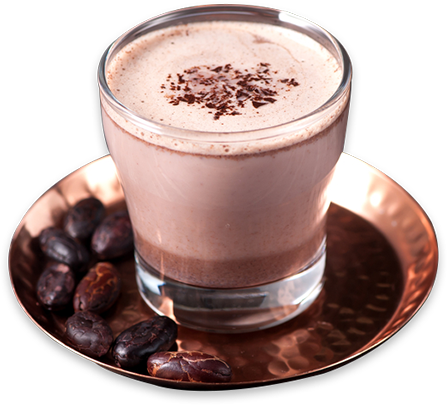
And of course, all the wealthy, elite and intellectuals in Europe were drinking this stuff too.
Cacao had gone global.
Which was a good thing…
After all, we wouldn’t be enjoying chocolate today if this never happened.
But…
There was a HUGE PROBLEM with farming cacao. You see…



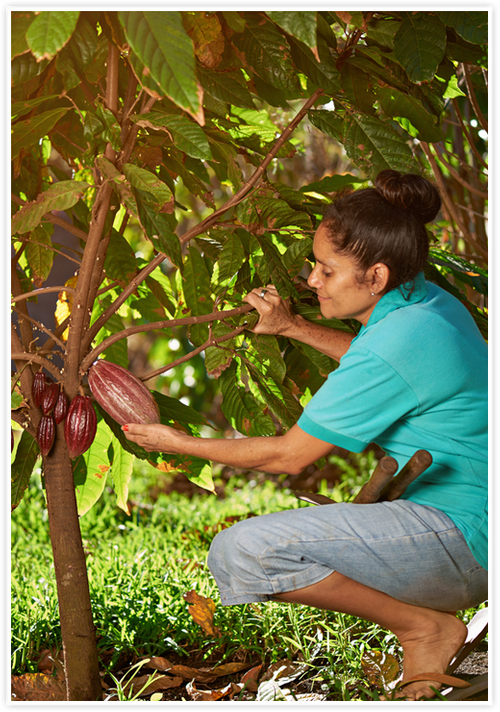
Cacao is probably one of the toughest crops to plant, farm, harvest and even ship in the world.
Why?
Well, when you think of a farm, what do you think of?
You may imagine a vast sea of golden wheat as far as the eye can see.
Or you might see a cornfield when you close your eyes.
But Cacao? It’s a difficult plant. It doesn’t grow evenly in an organized way like wheat or corn.
You have to plant it in a jungle-like setting.
Chocolate expert and historian Maricel Presilla calls it a “green anarchy”.
You see, cacao needs shade.
So on a cacao plantation you end up with several “stories” of plants.
You have upper story trees like coconut palms, kola nut or aintree.
Then you have mid-level trees like yuca trees, coffee bushes and banana trees.
The cacao plants grow inside that complex ecosystem.
And what’s more, you need to constantly prune, maintain and fiddle with it.
If you walked into a “cacao plantation” and didn’t know what you were looking for… you’d think you walked into a rainforest.
Think of it this way…
Working on a cacao plantation is like conducting a 100-piece philharmonic orchestra.
It’s a lot of work.
All the plants need to work together.
Where the plants are needs to be right.
The timing of when to prune and when to harvest needs to be right.
But that’s not even the worst of it.
Cacao has been called a “harsh mistress” over the years because…
Well, the crop is highly susceptible to an absurd variety of diseases.
They all have scary names too…
Like witches broom, capsid, swollen shoot, black pod rot, cocoa wilt… and more.
Few other crops in the world can go bad so easily and quickly.
Cacao simply has a history of just being demanding, fragile and persnickety.
Fortunes have been lost in a single harvest because the entire crop failed.
And that’s why for as long as cacao was commercial…
Farmers, plantation owners and scientists have tried to improve cacao.
Cacao is probably one of the toughest crops to plant, farm, harvest and even ship in the world.
Why?
Well, when you think of a farm, what do you think of?
You may imagine a vast sea of golden wheat as far as the eye can see.
Or you might see a cornfield when you close your eyes.
But Cacao? It’s a difficult plant. It doesn’t grow evenly in an organized way like wheat or corn.
You have to plant it in a jungle-like setting.
Chocolate expert and historian Maricel Presilla calls it a “green anarchy”.
You see, cacao needs shade.
So on a cacao plantation you end up with several “stories” of plants.
You have upper story trees like coconut palms, kola nut or aintree.
Then you have mid-level trees like yuca trees, coffee bushes and banana trees.
The cacao plants grow inside that complex ecosystem.
And what’s more, you need to constantly prune, maintain and fiddle with it.
If you walked into a “cacao plantation” and didn’t know what you were looking for… you’d think you walked into a rainforest.
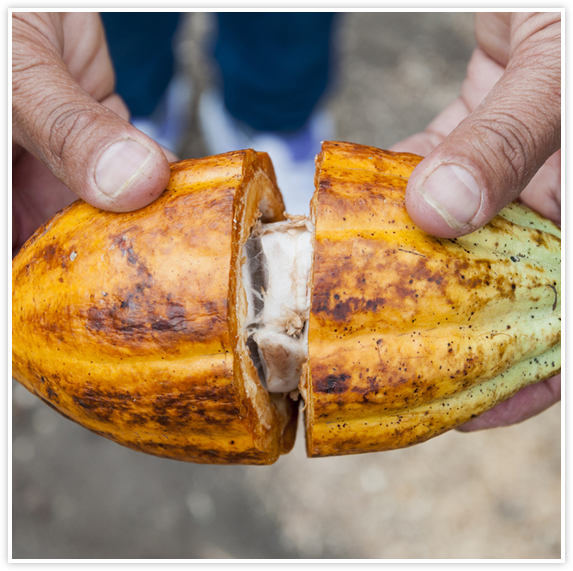
Think of it this way…
Working on a cacao plantation is like conducting a 100-piece philharmonic orchestra.
It’s a lot of work.
All the plants need to work together.
Where the plants are needs to be right.
The timing of when to prune and when to harvest needs to be right.
But that’s not even the worst of it.
Cacao has been called a “harsh mistress” over the years because…
Well, the crop is highly susceptible to an absurd variety of diseases.

Cross breeding, hybridization, you name it.
The race to meet global demand of chocolate meant…
Bringing modern science to a 3,000 year old plant that had been untouched until now.
By the early 18th century, there were several different genetic strains of cacao Some strains gave you more pods, more beans… but it was more bitter.
(Which meant they had to refine it more and add more sugar to it to make it palatable.)
Others gave a weird, sour quality.
Some lost their rich aroma.
While many gave a flat, un-complex taste.
Ultimately though — the world got more chocolate…
But it was a much lower quality chocolate…
Which meant most of the global supply HAD to be refined, heated, conched and filled with milk and sugar…
Just so it’s tasty enough for people to want to consume.
So the question then became…
Whatever happened to the original Mesopotamian cacao strain?
By this time, some people have started calling it “cacao real” or real chocolate in Spanish, because it was “the real thing”….
Versus the nine other major strains now out in the market.
BUT —
The original was the worse for being fickle.
Of all the new strains, what the Mesopotamians originally farmed was the most demanding of them all.
So eventually, due to neglect, being bred out or just plain being replaced on plantations… with a hardier, more disease-resistant strain…
The “original chocolate” just disappeared from the scene…
And many believed it had even gone extinct!
And to be frank? Nobody cared…
Because it was such a difficult plant to work with.
And that would be the end of the story —
Except almost two hundred years later…
Carlos Sandoval Sr., the father of the man I was talking to at the Gourmet Food Fair… made an accidental discovery of epic proportions…

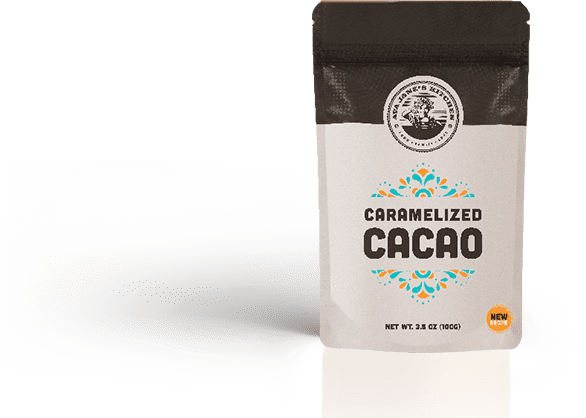

Several years ago, Carlos Sandoval Sr. was an engineer.
At this time, the Southeast region of Tabasco was suffering from a terrible flood.
Now — Tabasco is one of the poorest areas in Mexico.
(And yes, that’s where we got the name for the tabasco chili pepper.)
But that’s not important.
What’s important is this: Carlos Sr., being a good Samaritan, went to help out in this flood.
He donated food and clothing and just lent a hand wherever he could.
Being an engineer, he offered to appraise property values for free.
And that’s when he met Doctor Hernandez.
Dr. Hernandez owned a farm in this region.
It had been in his family for over four generations.
However, this wasn’t in Carlos’ wheelhouse… as it was rural land, and the flood damage was pretty severe… he missed something important.
We’ll get back to that later.
But anyway, the doctor thanked the engineer for his generosity and they parted ways.
And that was that.
It would’ve been the end of this story except…
Something bothered Carlos about the farm he examined that day.

He didn’t know quite what it was.
Was it something he saw? Something he noticed? Something out of place?
Carlos couldn’t put a finger on it.
Anyway —
The engineer and the doctor stayed in touch. A letter here. A phone call there.
You know, just to check up on each other to see how they were doing.
The engineer’s practice had grown and the doctor’s farm had recovered and was fertile again.
All was good.
A few years later, an opportunity to visit the doctor at his farm came up…

Well, listen. You know where this is going…
Because of this discovery, the Tabasco region attracted a lot of attention in the chocolate community.
What Dr. Hernandez and Carlos Sandoval Sr. discovered inspired a lot of farmers to start looking to see what cacao plants were growing in their fields…
And many of them started to farm this cacao…
Bringing to the world… a cacao people thought almost went extinct…
But that’s not all.
As you recall, you may remember me telling you that Tabasco is one of the poorest regions in the country, if not the world…
Many of the farmers here were growing grass and palm trees. As a producer… in a good year, they made maybe $800 a year.
Many of the youth who grow up around these parts left home to work in the USA. Most of them did it illegally.
Life is rough out here.
But here’s the thing with cacao though…
It is a cash crop.
So now, many of these farmers have switched over to growing, maintaining and harvesting this original strain of cacao.
And instead of making $800 a year…
These family plantations now make $8,000 to $10,000!
Take a moment to truly appreciate that.
That’s ten to thirteen times more than they were making before!
Imagine if your income 10X’d in a few months…
One of these co-ops is called Agroindustrias Quetzal. They’ve been around since 2013.
Today, they have 72 families in their network controlling 300 hectares of cacao.
On average, five family members work on each farm.
In other words, in this one co-op alone, 360 Mexicans are now making a lot more money because of this cacao.
Their lives have been transformed.
In fact, many of these farmers’ sons and daughters have returned from the United States to work on the plantation.
This project has changed their lives. It has brought families back together. And they are thriving now.
They’re selling original chocolate. They’re planting and growing cacao much like their ancestors did.
But more importantly —
They’re making the caramelized chocolate beans I fell in love with at the beginning of this story…
And I wouldn’t have known about any of this if I had gone back to my hotel that day…
You wouldn’t be reading this today and I would’ve left the Gourmet Food Fair in Mexico City with nothing but a caffeine high…
But fate intervened to bring Cacao and Cawrse together.
Now…
Of course, after learning of this story, I couldn’t help myself.
As the founder of Ava Jane’s Kitchen…
I had to know if I could export this stuff to my beloved customers in the USA and Canada...
As you know, my life passion is to bring truly unique and interesting foods to you…
That’s the mission of Ava Jane’s Kitchen.
And here’s where you come in…


I’ll make it as simple as possible.
I want to send you a full-size sample of these amazing caramelized cacao beans.
I want you to try it, the crunchy sweet coating over the dried cacao bean.
I have a limited number of bags available fo this introductory offer.
Buy just 2 bags at the regular price and I will include your free bag.
Of course, just like with all of our products, if you are not satisfied with your purchase, you can invoke our lifetime
guarantee.


Limited Availability

Two bags for the member price of $9.99 each plus one bag for FREE.
No further obligation, this is a one-time offer. You are NOT a member. I usually only have enough cacao for members. You may not have the opportunity to buy more.
order now
Thanks for reading!

John Cawrse, founder of Ava Jane's Kitchen

We stand by our 100% Satisfaction Guarantee.
Quite simply, if you don’t fall in love with our products, contact us and we will do our best to make it right. No questions asked. So please, take your time with cooking, tasting and enjoying them. There is no 30, 60, or even 90-day deadline. This guarantee is lifetime.
For new customers and one-time orders, we have two options for you to choose from when it comes to our 100% Satisfaction Guarantee. This does not apply to your subscription orders.
Which one works best for you?
1. Receive a full 100% refund immediately via in-store credit. This credit does not expire and can be used for new purchases on our web store. It cannot be applied to auto-orders or past orders.
2. Receive a 50% refund on your order, applied to your original payment method.
Regardless of which option you choose, the product is yours to keep. Please note, the original shipping charge is not refundable.
